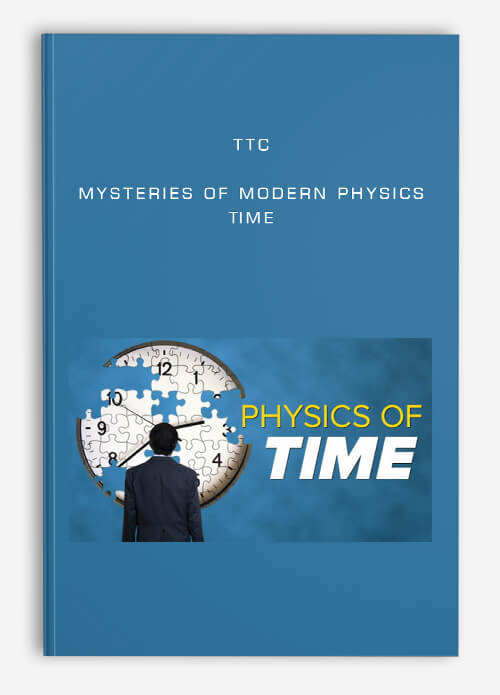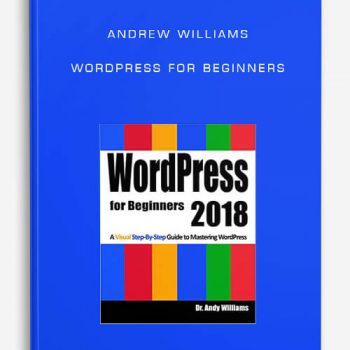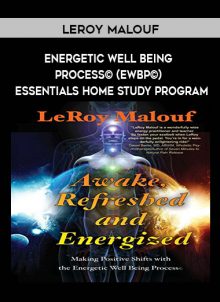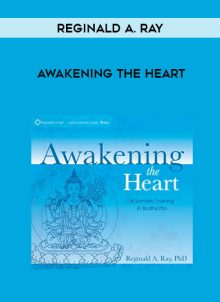
Mysteries of Modern Physics – Time by TTC
Description
Time rules our lives. From the rising and setting of the sun to the cycles of nature, the thought processes in our brains, and the biorhythms in our day, nothing so pervades our existence and yet is so difficult to explain. Time seems to be woven into the very fabric of the universe. But why?
Consider these contrasting views of time:
A movie of a person diving into a pool has an obvious arrow of time. When the movie is played backward, everyone recognizes that it shows an event that would never occur in the real world.
But zoom in on any part of this scene at the atomic scale and the movie can be run backward or forward and be indistinguishable. Either way, the particle interactions are consistent with the laws of physics.
Why does one movie have an arrow of time moving in only one direction and the other does not? Surprisingly, the search for an answer leads through some of the most pioneering fields of physics, including thermodynamics, relativity, quantum theory, and cosmology.
The key concept is called “entropy,” which is related to the second law of thermodynamics, considered by many scientists to be the most secure law in all of physics. The second law has even been compared to Shakespeare’s plays in its importance to the education of a culturally informed person.
But that’s only the beginning, since the quest for the ultimate theory of time draws on such exciting ideas as black holes, cosmic inflation, and dark energy, before closing in on a momentous question that until recently was considered unanswerable: What happened before the big bang?
In 24 riveting half-hour lectures, Mysteries of Modern Physics: Time takes you on a mind-expanding journey through the past, present, and future, guided by Professor Sean Carroll, noted author and Senior Research Associate in Physics at the California Institute of Technology.
Designed for nonscientists as well as those with a background in physics, Mysteries of Modern Physics: Time shows how a feature of the world that we all experience connects us to the instant of the formation of the universe—and possibly to a multiverse that is unimaginably larger and more varied than the known cosmos.
While focusing on physics, Professor Carroll also examines philosophical views on time, how we perceive and misperceive time, the workings of memory, and serious proposals for time travel, as well as imaginative ways that time has been disrupted in fiction.
Clues to the Origin of Time
Break an egg. Melt an ice cube. Mix coffee and cream. Each starts with an ordered state and ends with one that is much more disorderly. Each is an example of an increase in entropy, which is a measure of the degree of disorder in a closed system. The entropy of the universe was lower in the past; it will be higher in the future. Increasing entropy defines the arrow of time, implying that at the beginning of the universe entropy must have been extraordinarily low. This course seeks to understand why.
Professor Carroll begins like a detective by gathering the facts. What do we know about time, what characterizes it, and how do we measure it? Then he combs the universe for clues, from the contrasting views on time of Isaac Newton and Albert Einstein, to Rudolf Clausius’s invention of the concept of entropy and Ludwig Boltzmann’s brilliant insight about why entropy increases and therefore why time proceeds from past to future.
You explore Boltzmann’s statistical explanation for the nature of time, and you see how, carried to its logical conclusion, it leads to a bizarre scenario called Boltzmann brains. You look at another curious thought experiment, called Maxwell’s demon, which helps explain the presence of order and life in a universe of relentlessly increasing disorder.
In the course of these inquiries, you consider time from many perspectives, including these:
A dimension with a difference: Time is the fourth dimension. But unlike the three dimensions that constitute space, time can’t be explored randomly from point to point. You just experience it sequentially second after second. This continuous flow from past to future is the arrow of time.
The view from “nowhen”: The present moment seems real in a way that the past and future do not. But to better understand why time and the universe are the way they are, it’s useful to view all moments—past, present, and future—as equally real. This is the view from “nowhen.”
Quantum time: Some phenomena at the quantum scale are not reversible with respect to time—unlike all other processes in fundamental physics. Could these events be the origin of the arrow of time? Could they explain why we remember the past but not the future?
You also investigate the past hypothesis, which assumes that atomic theory and fundamental physics cannot account for the difference between the past and the future by themselves. Instead, the arrow of time can only be explained by the initial conditions that gave birth to the universe itself. Which brings you to the big bang, one of the major focuses of this course.
Time to Get This Course
Your time-traveling adventures also include excursions into fiction and film, which Professor Carroll engages with characteristic enthusiasm and wit. While storytellers are seldom concerned with getting the physics right, it’s instructive how they usually get it very wrong:
Stopping time: Stories that stop time as the hero moves through a stationary world fail to consider that no one could function in such an environment. Air would be as immovable as a brick wall. Light and sound would stop. No plot would be possible!
Time going backward: A character who experiences the arrow of time in reverse faces grave difficulties relating to another character going through time the normal way. They would be like travelers on the highway going in opposite directions.
Time travel: Fictional time travelers typically dematerialize and then rematerialize at a different point in time. But real time travel, if it were possible, could not skip over the intervening part of spacetime. Real time travel would be a journey through spacetime.
In the time that has passed since you started reading this, the entropy of the universe has increased. The future of a few moments ago is now the present. You are at a different point in spacetime, even if you haven’t moved from your chair. “What is time?” asked Saint Augustine 1,600 years ago. “If no one asks me, I know. But if I wish to explain it to someone who asks, I know not.” With Mysteries of Modern Physics: Time, you will be much closer to an answer.
Lectures:
1. Why Time Is a Mystery
2. What Is Time?
3. Keeping Time
4. Timeâs Arrow
5. The Second Law of Thermodynamics
6. Reversibility and the Laws of Physics
7. Time Reversal in Particle Physics
8. Time in Quantum Mechanics
9. Entropy and Counting
10. Playing with Entropy
11. The Past Hypothesis
12. Memory, Causality, and Action
13. Boltzmann Brains
14. Complexity and Life
15. The Perception of Time
16. Memory and Consciousness
17. Time and Relativity
18. Curved Spacetime and Black Holes
19. Time Travel
20. Black Hole Entropy
21. Evolution of the Universe
22. The Big Bang
23. The Multiverse
24. Approaches to the Arrow of Time













tristian –
This is Digital Download service, the course is available at Coursecui.com and Email download delivery.